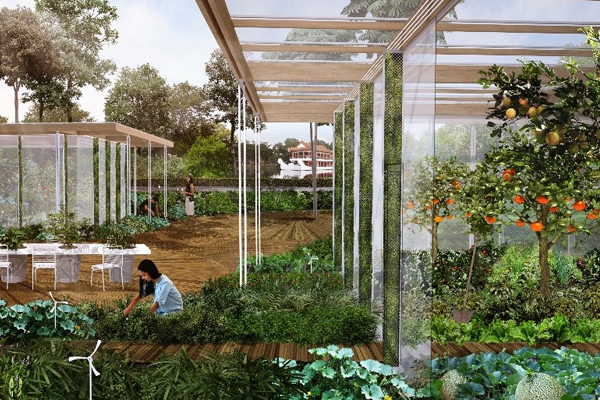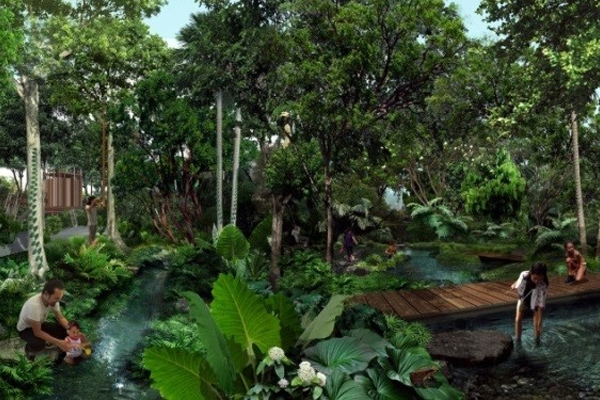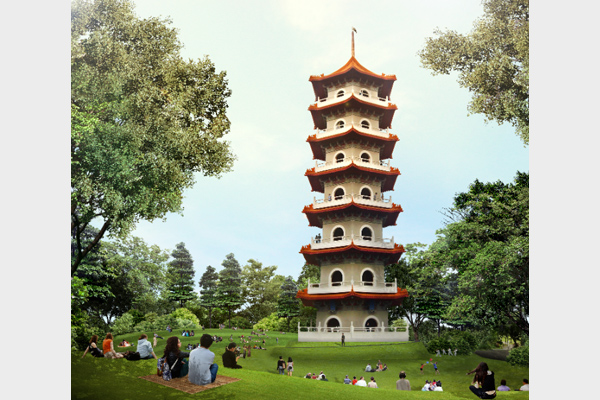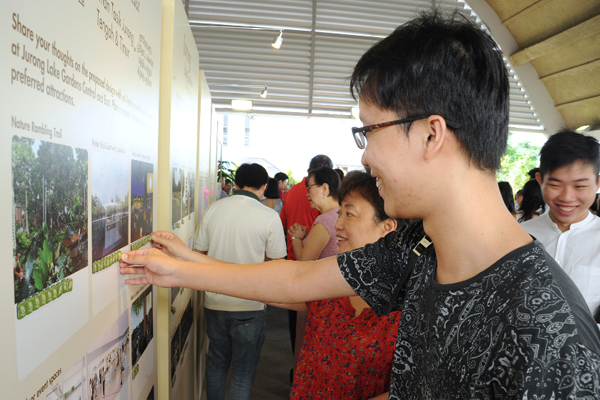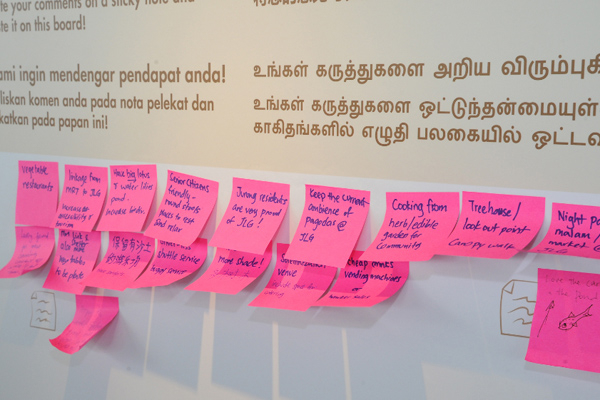Following the award of the design consultancy tender for Jurong Lake Gardens (JLG) Central and East in October 2016, the National Parks Board (NParks) invited the community to give feedback on the winning consultant team’s proposal.
On 26 November, NParks launched an exhibition at the Canopy @ J Link to gather public feedback on the proposal. Mr Lawrence Wong, Minister for National Development and Second Minister for Finance, officially opened the exhibition. Ms Grace Fu, Minister for Culture, Community and Youth and Adviser to Yuhua Grassroots Organisations, also attended the event.

As Singapore’s new national garden in the heartlands, JLG is envisioned to be a people’s garden where families and the community can come together. The 90-hectare Gardens comprise JLG Central (the Chinese and Japanese Gardens), JLG East (a promenade fronting the future Science Centre along the eastern shore of Jurong Lake) and JLG West (renamed from Jurong Lake Park).
Plans for JLG Central and East
Keeping in mind the need to preserve nature and memories, the appointed consultant team developed a masterplan that focuses on four key areas:
- Tropical Horticulture and Garden Artistry
- Nature and Sustainability
- Community
- Science
While JLG West will focus on the restoration of natural habitats and nature-themed family recreation, JLG Central will feature tropical horticultural gardens within a natural and rustic setting.
Unique tropical flora including flowering trees, ornamentals, and edibles will be cultivated in artistically created gardens alongside ponds, water terraces, and streams that feature in aquatic gardens.
The Gardens aspire to showcase sustainable features that will be a model for other developments in Singapore. They include the conservation of nature to sustain ecological functions, the use of science and technology to create energy-efficient and comfortable outdoor environments, and water-sensitive designs that remediate water with plants and landscapes.
Familiar structures including the pagodas, stone boat, Bonsai Garden and Japanese guesthouse will be repurposed for new uses that complement the garden spaces where community activities and events can be held.
Science and technology will be used to demonstrate horticultural advances in plant cultivation, display, and management, as well as to create energy-efficient and comfortable landscapes. The new Gardens will offer smart-enabled visitor services and ample amenities, including F&B and diverse recreational activities.
A Garden for Everyone
JLG West is scheduled to be completed in 2018, while JLG Central and East will be progressively completed from 2020 onwards. NParks had previously engaged the public in the design of JLG West and considered their suggestions for incorporation into the next phase of development.
NParks hopes to generate the same level of public interest and feedback for JLG Central and East through its public engagement sessions, which included exhibitions from 26 November to 11 December 2016 and townhall/roving exhibitions from December 2016 to February 2017.
You can find out more information about JLG and provide your suggestions at https://www.nparks.gov.sg/juronglakegardens.








